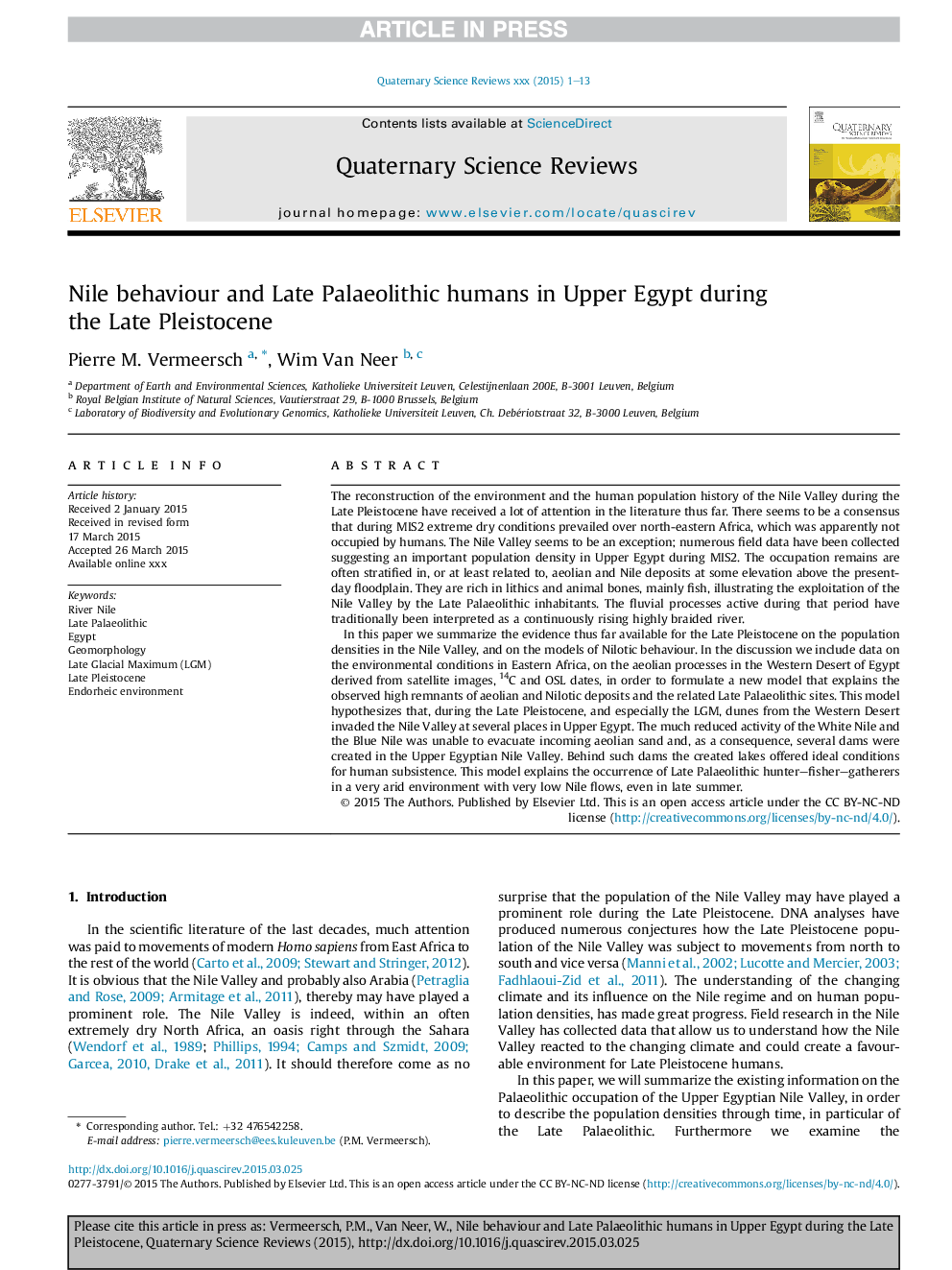| Article ID | Journal | Published Year | Pages | File Type |
|---|---|---|---|---|
| 6446190 | Quaternary Science Reviews | 2015 | 13 Pages |
Abstract
In this paper we summarize the evidence thus far available for the Late Pleistocene on the population densities in the Nile Valley, and on the models of Nilotic behaviour. In the discussion we include data on the environmental conditions in Eastern Africa, on the aeolian processes in the Western Desert of Egypt derived from satellite images, 14C and OSL dates, in order to formulate a new model that explains the observed high remnants of aeolian and Nilotic deposits and the related Late Palaeolithic sites. This model hypothesizes that, during the Late Pleistocene, and especially the LGM, dunes from the Western Desert invaded the Nile Valley at several places in Upper Egypt. The much reduced activity of the White Nile and the Blue Nile was unable to evacuate incoming aeolian sand and, as a consequence, several dams were created in the Upper Egyptian Nile Valley. Behind such dams the created lakes offered ideal conditions for human subsistence. This model explains the occurrence of Late Palaeolithic hunter-fisher-gatherers in a very arid environment with very low Nile flows, even in late summer.
Related Topics
Physical Sciences and Engineering
Earth and Planetary Sciences
Geology
Authors
Pierre M. Vermeersch, Wim Van Neer,
